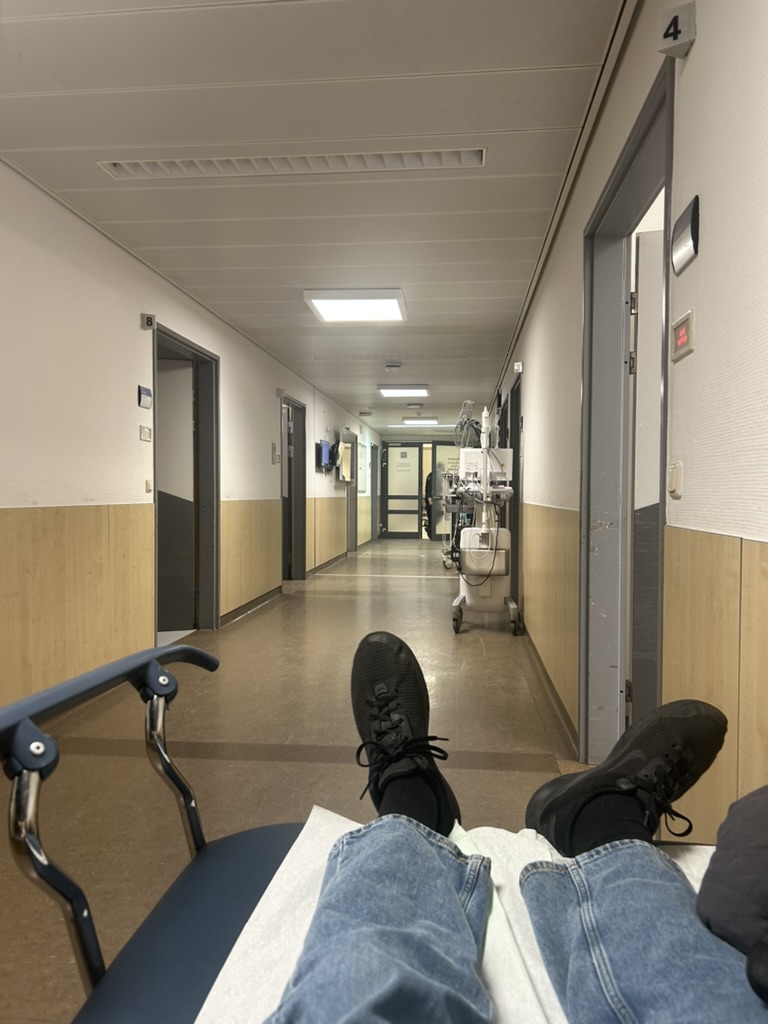Anaphylaxis Abroad
It’s never ideal to find yourself in an emergency room, while abroad this adds a whole new level of stress and pure terror. For me, it started on the way back from a brewery on our group bonding trip to the city of Duisburg. After clearing that the mushroom and onion schnitzel from the restaurant was free of peanuts and tree nuts with the waiter I thought I was in the clear. However, an hour after eating the delicious fried pork meal, I felt that something was wrong, my throat was starting to swell up. I was going into anaphylaxis.
I’ve known that I’ve had allergies to nuts from when I was very young and since then had been able to completely avoid them. Because of this, I had never felt what a reaction was like before. I spent ten minutes in the lobby of the hostel we were staying at in complete denial of what was happening, hoping the symptoms would just magically go away. But after a certain point, there was no denying it anymore, I needed to take my EpiPen. Luckily for me, I was surrounded by friends and classmates including a volunteer EMT who helped me through the experience. Before I knew it, I was in the back of an ambulance rushing to the hospital.
Now to save you the trouble of finding out yourself, a German hospital looks remarkably similar to an American one. Sadly I can only comment on the hallways of the emergency wing because apparently everyone decided to have an emergency the same night so there were no emergency rooms available for me. So I was alone in a new city, in a new country, frantically trying to communicate my symptoms through a language barrier. What else does a college student want to experience a week into their study abroad program?
While I sat in the hallway of the hospital being pumped with an IV for over three hours, I got a unique behind-the-scenes experience of the hospital. From my spot in the hallway, I got an unfiltered look at how the hospital operated. Nurses and doctors moved swiftly throughout the floor, getting patients in and out of the rooms as fast as they could while updating their records on a massive TV-like touchscreen on the wall. Despite all of the chaos that comes with a packed emergency wing, the system seemed to work seamlessly, highlighting the balance of highly trained professionals, technology, and organization.
What stood out to me in particular was the design of the hospital and the assembly-line like process that was implemented. The wide hallways were big enough to fit and turn massive hospital beds as paramedics rushed patients through the halls, delivering them to nurses, who began treatment until the doctors were able to take over. The workflow was efficient with each person knowing their specific roles in the process. It was clear that the infrastructure was designed to handle high-pressure situations, even on nights when the emergency wing was literally overflowing.
This whole experience, while absolutely terrifying, gave me a first-hand look at how much thought and effort goes into keeping hospitals functional. It wasn’t exactly the first week that I had imagined, but it definitely left me with a deeper understanding and appreciation for the systems that we often take for granted.
Written By: Andrew M

F.Mertens. (2024, October 16). German healthcare compared to the USA: Cultural differences and preparation tips for foreigners – IHC. IHC Company S.A. | International HealthCare Company. https://ihc-company.eu/german-healthcare-compared-to-the-usa-cultural-differences-and-preparation-tips-for-foreigners/
